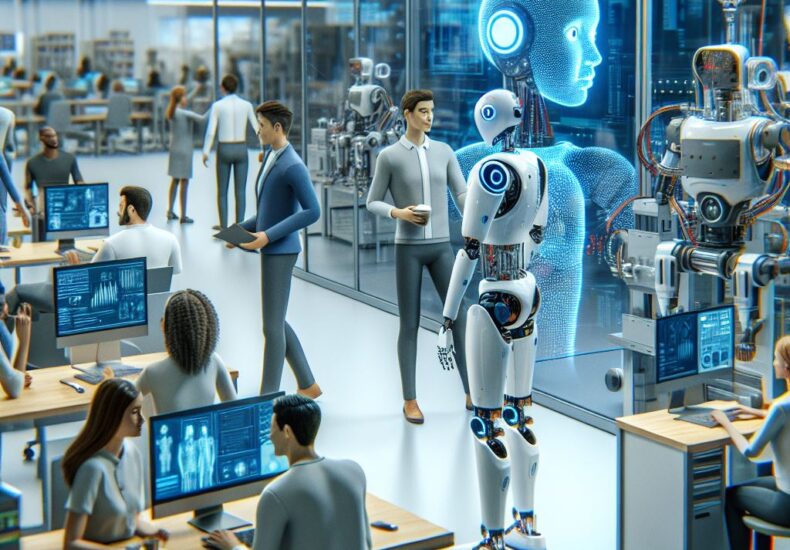
Is AI a Real Threat to Certain Groups of Workers?
Artificial Intelligence (AI) has been a topic of intense debate and speculation, particularly regarding its impact on the workforce. While AI offers numerous benefits, such as increased efficiency and the ability to perform complex tasks, it also raises concerns about its potential to displace certain groups of workers. This article explores whether AI genuinely poses a threat to specific segments of the workforce and examines the broader implications of this technological advancement.
One of the primary concerns about AI is its potential to automate jobs that involve routine and repetitive tasks. For instance, roles in manufacturing, data entry, and customer service are particularly vulnerable to automation. Machines and algorithms can perform these tasks more quickly and accurately than humans, leading to significant cost savings for businesses. As a result, workers in these fields may find their jobs at risk, facing the possibility of unemployment or the need to transition to new roles.
However, the impact of AI is not limited to low-skilled jobs. Even highly skilled professionals, such as doctors, lawyers, and financial analysts, are not immune to the effects of AI. Advanced AI systems can analyze vast amounts of data, identify patterns, and make predictions with a level of accuracy that surpasses human capabilities. For example, AI-powered diagnostic tools can assist doctors in identifying diseases more accurately and at an earlier stage than traditional methods. While this can enhance the quality of healthcare, it also raises questions about the future role of medical professionals.
Despite these concerns, it is essential to recognize that AI also creates new opportunities. As some jobs become obsolete, new roles emerge that require different skill sets. For instance, the development and maintenance of AI systems require expertise in fields such as data science, machine learning, and software engineering. Additionally, AI can augment human capabilities, allowing workers to focus on more complex and creative tasks that machines cannot perform. This shift can lead to more fulfilling and intellectually stimulating work for many individuals.
Moreover, the integration of AI into the workforce necessitates a focus on education and training. To mitigate the potential negative impact of AI, it is crucial to invest in reskilling and upskilling programs. By equipping workers with the necessary skills to adapt to the changing job market, society can ensure that individuals remain employable and can take advantage of new opportunities created by AI. Governments, educational institutions, and businesses must collaborate to develop comprehensive training programs that address the evolving needs of the workforce.
Another important consideration is the ethical implications of AI. As AI systems become more prevalent, it is vital to ensure that they are designed and implemented in a way that is fair and unbiased. This includes addressing issues such as algorithmic bias, data privacy, and the potential for AI to perpetuate existing inequalities. By establishing robust ethical guidelines and regulatory frameworks, society can harness the benefits of AI while minimizing its potential harms.
In conclusion, while AI does pose a threat to certain groups of workers, it also offers significant opportunities for growth and innovation. The key to navigating this transition lies in proactive measures, such as investing in education and training, promoting ethical AI practices, and fostering a culture of adaptability. By embracing these strategies, society can ensure that the benefits of AI are shared broadly, and that individuals are equipped to thrive in an increasingly automated world. The future of work will undoubtedly be shaped by AI, but with careful planning and consideration, it can lead to a more prosperous and equitable society for all.
You may also like
Archives
Calendar
| M | T | W | T | F | S | S |
|---|---|---|---|---|---|---|
| 1 | 2 | 3 | 4 | 5 | 6 | 7 |
| 8 | 9 | 10 | 11 | 12 | 13 | 14 |
| 15 | 16 | 17 | 18 | 19 | 20 | 21 |
| 22 | 23 | 24 | 25 | 26 | 27 | 28 |
| 29 | 30 | 31 | ||||
Leave a Reply
You must be logged in to post a comment.